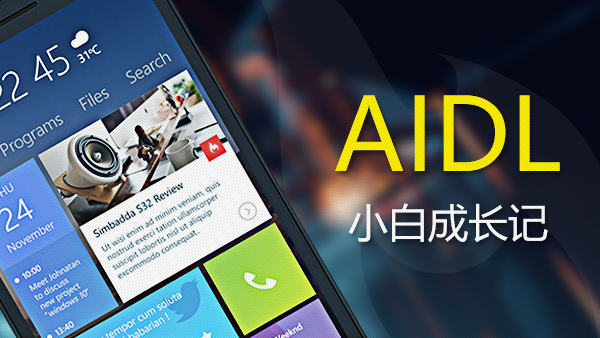图片大图预览
在我现在的项目当中,也存在大图预览的功能,但其实现过于繁重,采用一个Activity实现,并且在图片展示的过程中会产生卡顿感,整体感觉很是不好,正巧项目也在重构过程中,所以决定将这一功能写成一个成型的控件。话不多说,先上图看下效果。
整体实现思路
图片展示:PhotoView(大图支持双击放大)
图片加载:Glide(加载网络图片、本地图片、资源文件)
小图变大图时的实现:动画
图片的下载:插入系统相册
该控件采用自定义View的方式,通过一些基本的控件的组合,来形成一个具有大图预览的控件。上代码
使用方法
(1)在布局文件中引用该view
<com.demo.gallery.view.GalleryView android:id="@+id/photo_gallery_view" android:layout_width="match_parent" android:layout_height="match_parent" android:visibility="gone" app:animDuration="300" app:saveText="保存至相册" app:saveTextColor="#987622"/>
(2)具体使用方法
GalleryView galleryView = findViewById(R.id.photo_gallery_view);
galleryView.showPhotoGallery(index, List, ImageView);
到这里就结束了,就是这么简单!
具体实现
(1)先从showPhotoGallery(index, List, ImageView)这个方法讲起
int index:我们想要展示的一个图片列表中的第几个
List list: 我们要传入的要展示的图片类型list(支持网络图片、资源图片、本地图片(本地图片与网络图片其实都是一个字符串地址))
public class GalleryPhotoModel { public Object photoSource; public GalleryPhotoModel(@DrawableRes int drawableRes) { this.photoSource = drawableRes; } public GalleryPhotoModel(String path) { this.photoSource = path; } }ImageView:即你点击想要展示的那个图片
(2)对传入GalleryView的数据进行处理
/** * @param index 想要展示的图片的索引值 * @param photoList 图片集合(URL、Drawable、Bitmap) * @param clickImageView 点击的第一个图片 */ public void showPhotoGallery(int index, List<GalleryPhotoModel> photoList, ImageView clickImageView) { GalleryPhotoParameterModel photoParameter = new GalleryPhotoParameterModel(); //图片 photoParameter.photoObj = photoList.get(index).photoSource; //图片在list中的索引 photoParameter.index = index; int[] locationOnScreen = new int[2]; //图片位置参数 clickImageView.getLocationOnScreen(locationOnScreen); photoParameter.locOnScreen = locationOnScreen; //图片的宽高 int width = clickImageView.getDrawable().getBounds().width(); int height = clickImageView.getDrawable().getBounds().height(); photoParameter.imageWidth = clickImageView.getWidth(); photoParameter.imageHeight = clickImageView.getHeight(); photoParameter.photoHeight = height; photoParameter.photoWidth = width; //scaleType photoParameter.scaleType = clickImageView.getScaleType(); //将第一个点击的图片参数连同整个图片列表传入 this.setVisibility(View.VISIBLE); post(new Runnable() { @Override public void run() { requestFocus(); } }); setGalleryPhotoList(photoList, photoParameter); }通过传递进来的ImageView,获取被点击View参数,并拼装成参数model,再进行数据的相关处理。
(3)GalleryView的实现机制
该View的实现思路主要是:最外层是一个RelativeLayout,内部有一个充满父布局的ImageView和ViewPager。ImageView用来进行图片的动画缩放,ViewPager用来进行最后的图片的展示。其实该View最主要的地方就是通过点击ImageView到最后ViewPager的展示的动画。接下来主要是讲解一下这个地方。先看一下被点击ImageView的参数Model。GalleryPhotoParameterModel
public class GalleryPhotoParameterModel { //索引 public int index; // 图片的类型 public Object photoObj; // 在屏幕上的位置 public int[] locOnScreen = new int[]{-1, -1}; // 图片的宽 public int photoWidth = 0; // 图片的高 public int photoHeight = 0; // ImageView的宽 public int imageWidth = 0; // ImageView的高 public int imageHeight = 0; // ImageView的缩放类型 public ImageView.ScaleType scaleType; }3.1图片放大操作
private void handleZoomAnimation() { // 屏幕的宽高 this.mScreenRect = GalleryScreenUtil.getDisplayPixes(getContext()); //将被缩放的图片放在一个单独的ImageView上进行单独的动画处理。 Glide.with(getContext()).load(firstClickItemParameterModel.photoObj).into(mScaleImageView); //开启动画 mScaleImageView.getViewTreeObserver().addOnGlobalLayoutListener(new ViewTreeObserver.OnGlobalLayoutListener() { @Override public void onGlobalLayout() { //开始放大操作 calculateScaleAndStartZoomInAnim(firstClickItemParameterModel); // mScaleImageView.getViewTreeObserver().removeGlobalOnLayoutListener(this); } }); }/** * 计算放大比例,开启放大动画 * * @param photoData */ private void calculateScaleAndStartZoomInAnim(final GalleryPhotoParameterModel photoData) { mScaleImageView.setVisibility(View.VISIBLE); // 放大动画参数 int translationX = (photoData.locOnScreen[0] + photoData.imageWidth / 2) - (int) (mScreenRect.width() / 2); int translationY = (photoData.locOnScreen[1] + photoData.imageHeight / 2) - (int) ((mScreenRect.height() + GalleryScreenUtil.getStatusBarHeight(getContext())) / 2); float scale = getImageViewScale(photoData); // 开启放大动画 executeZoom(mScaleImageView, translationX, translationY, scale, true, new Animator.AnimatorListener() { @Override public void onAnimationStart(Animator animation) {} @Override public void onAnimationEnd(Animator animation) { showOtherViews(); tvPhotoSize.setText(String.format("%d/%d", viewPager.getCurrentItem() + 1, photoList.size())); } @Override public void onAnimationCancel(Animator animation) { } @Override public void onAnimationRepeat(Animator animation) { } }); }3.2 图片缩小操作
/** * 计算缩小比例,开启缩小动画 */ private void calculateScaleAndStartZoomOutAnim() { hiedOtherViews(); // 缩小动画参数 int translationX = (firstClickItemParameterModel.locOnScreen[0] + firstClickItemParameterModel.imageWidth / 2) - (int) (mScreenRect.width() / 2); int translationY = (firstClickItemParameterModel.locOnScreen[1] + firstClickItemParameterModel.imageHeight / 2) - (int) ((mScreenRect.height() + GalleryScreenUtil.getStatusBarHeight(getContext())) / 2); float scale = getImageViewScale(firstClickItemParameterModel); // 开启缩小动画 executeZoom(mScaleImageView, translationX, translationY, scale, false, new Animator.AnimatorListener() { @Override public void onAnimationStart(Animator animation) {} @Override public void onAnimationEnd(Animator animation) { mScaleImageView.setImageDrawable(null); mScaleImageView.setVisibility(GONE); setVisibility(GONE); } @Override public void onAnimationCancel(Animator animation) {} @Override public void onAnimationRepeat(Animator animation) {} }); }3.3 计算图片缩放的比例
private float getImageViewScale(GalleryPhotoParameterModel photoData) { float scale; float scaleX = photoData.imageWidth / mScreenRect.width(); float scaleY = photoData.photoHeight * 1.0f / mScaleImageView.getHeight(); // 横向图片 if (photoData.photoWidth > photoData.photoHeight) { // 图片的宽高比 float photoScale = photoData.photoWidth * 1.0f / photoData.photoHeight; // 执行动画的ImageView宽高比 float animationImageScale = mScaleImageView.getWidth() * 1.0f / mScaleImageView.getHeight(); if (animationImageScale > photoScale) { // 动画ImageView宽高比大于图片宽高比的时候,需要用图片的高度除以动画ImageView高度的比例尺 scale = scaleY; } else { scale = scaleX; } } // 正方形图片 else if (photoData.photoWidth == photoData.photoHeight) { if (mScaleImageView.getWidth() > mScaleImageView.getHeight()) { scale = scaleY; } else { scale = scaleX; } } // 纵向图片 else { scale = scaleY; } return scale; }3.4 执行动画的缩放
/** * 执行缩放动画 * @param scaleImageView * @param translationX * @param translationY * @param scale * @param isEnlarge */ private void executeZoom(final ImageView scaleImageView, int translationX, int translationY, float scale, boolean isEnlarge, Animator.AnimatorListener listener) { float startTranslationX, startTranslationY, endTranslationX, endTranslationY; float startScale, endScale, startAlpha, endAlpha; // 放大 if (isEnlarge) { startTranslationX = translationX; endTranslationX = 0; startTranslationY = translationY; endTranslationY = 0; startScale = scale; endScale = 1; startAlpha = 0f; endAlpha = 0.75f; } // 缩小 else { startTranslationX = 0; endTranslationX = translationX; startTranslationY = 0; endTranslationY = translationY; startScale = 1; endScale = scale; startAlpha = 0.75f; endAlpha = 0f; } //-------缩小动画-------- AnimatorSet set = new AnimatorSet(); set.play( ObjectAnimator.ofFloat(scaleImageView, "translationX", startTranslationX, endTranslationX)) .with(ObjectAnimator.ofFloat(scaleImageView, "translationY", startTranslationY, endTranslationY)) .with(ObjectAnimator.ofFloat(scaleImageView, "scaleX", startScale, endScale)) .with(ObjectAnimator.ofFloat(scaleImageView, "scaleY", startScale, endScale)) // ---Alpha动画--- // mMaskView伴随着一个Alpha减小动画 .with(ObjectAnimator.ofFloat(maskView, "alpha", startAlpha, endAlpha)); set.setDuration(animDuration); if (listener != null) { set.addListener(listener); } set.setInterpolator(new DecelerateInterpolator()); set.start(); }改View的主要实现如上,在图片进行缩放的时候,要考虑的情况:短边适配、图片原尺寸的宽高、展示图片的ImageView的宽高比、横竖屏时屏幕的尺寸。在此非常感谢震哥的帮助、抱拳了!老铁。如有更多想法的小伙伴。请移步我的github GalleryView地址
作者:cedear
链接:https://juejin.im/post/5ab8b36251882548fe4a204d
来源:掘金
著作权归作者所有。商业转载请联系作者获得授权,非商业转载请注明出处。

 随时随地看视频
随时随地看视频




